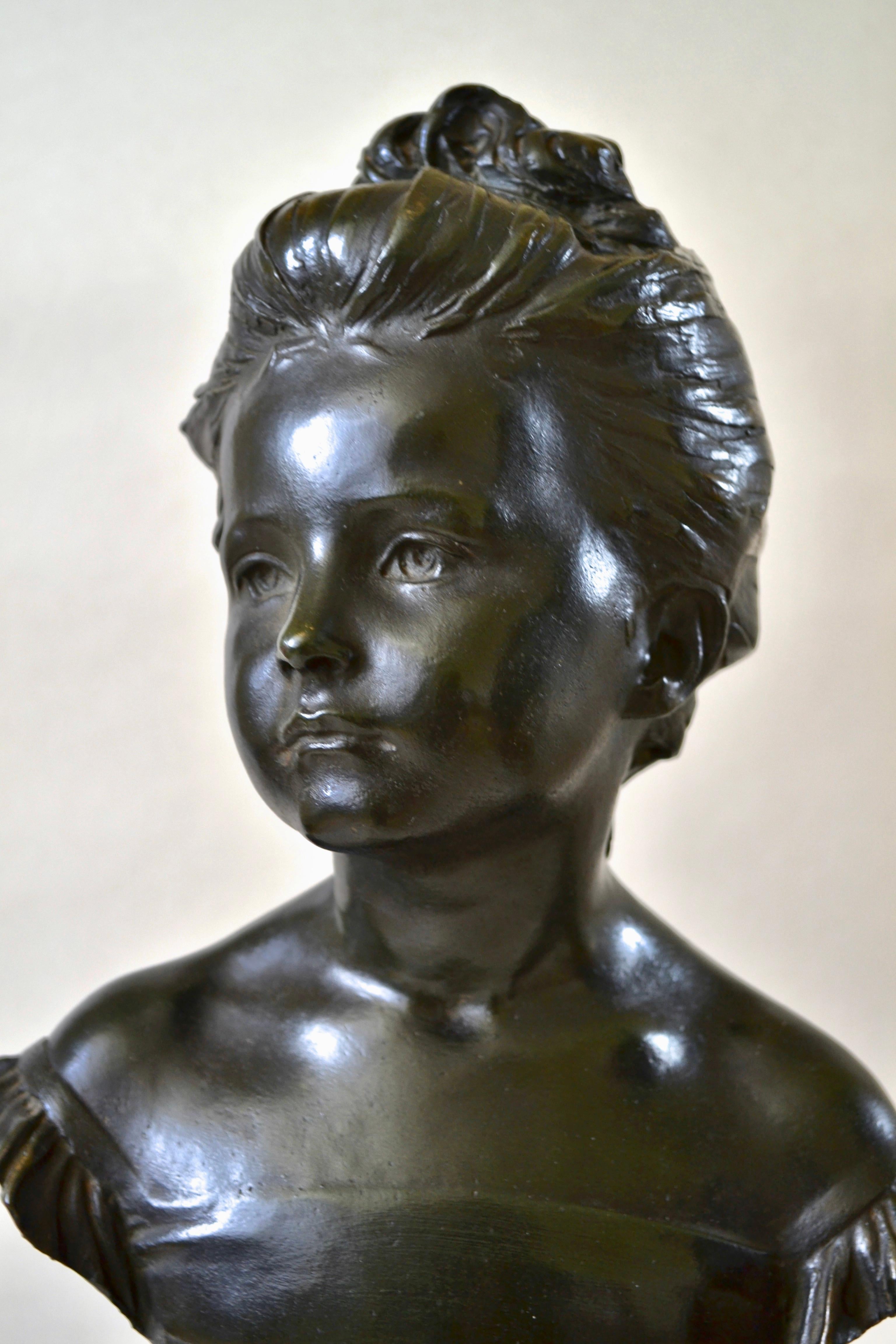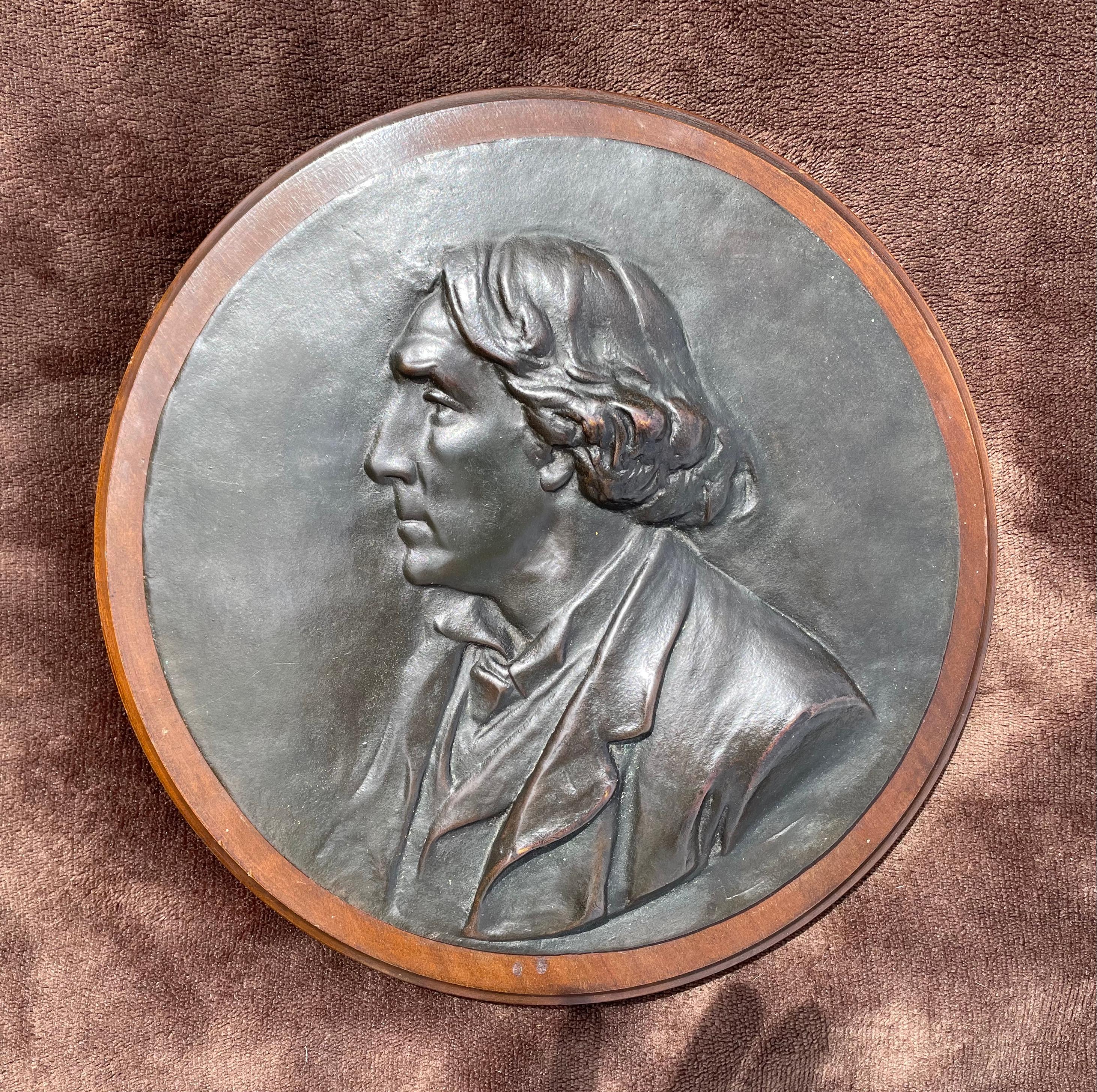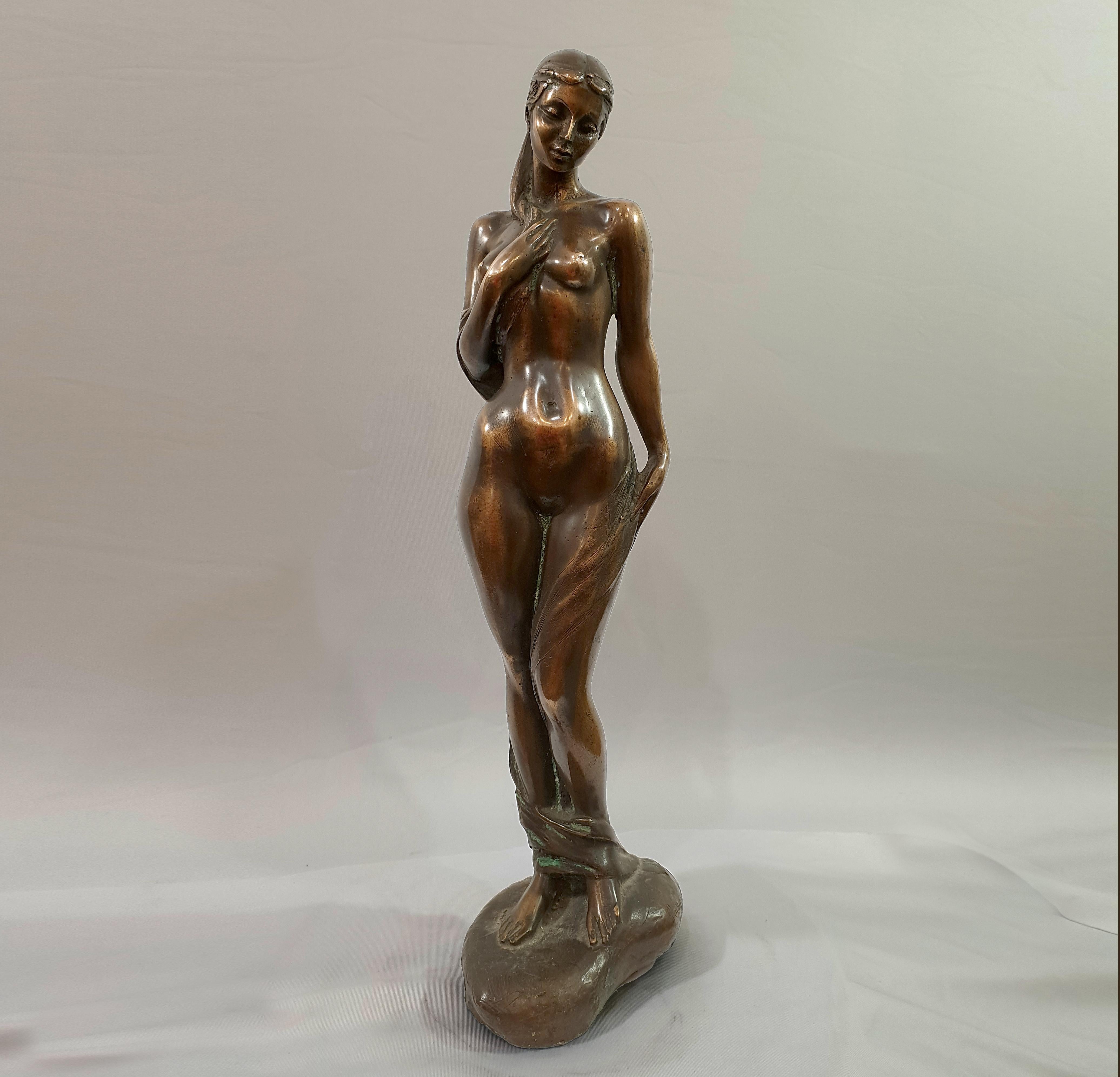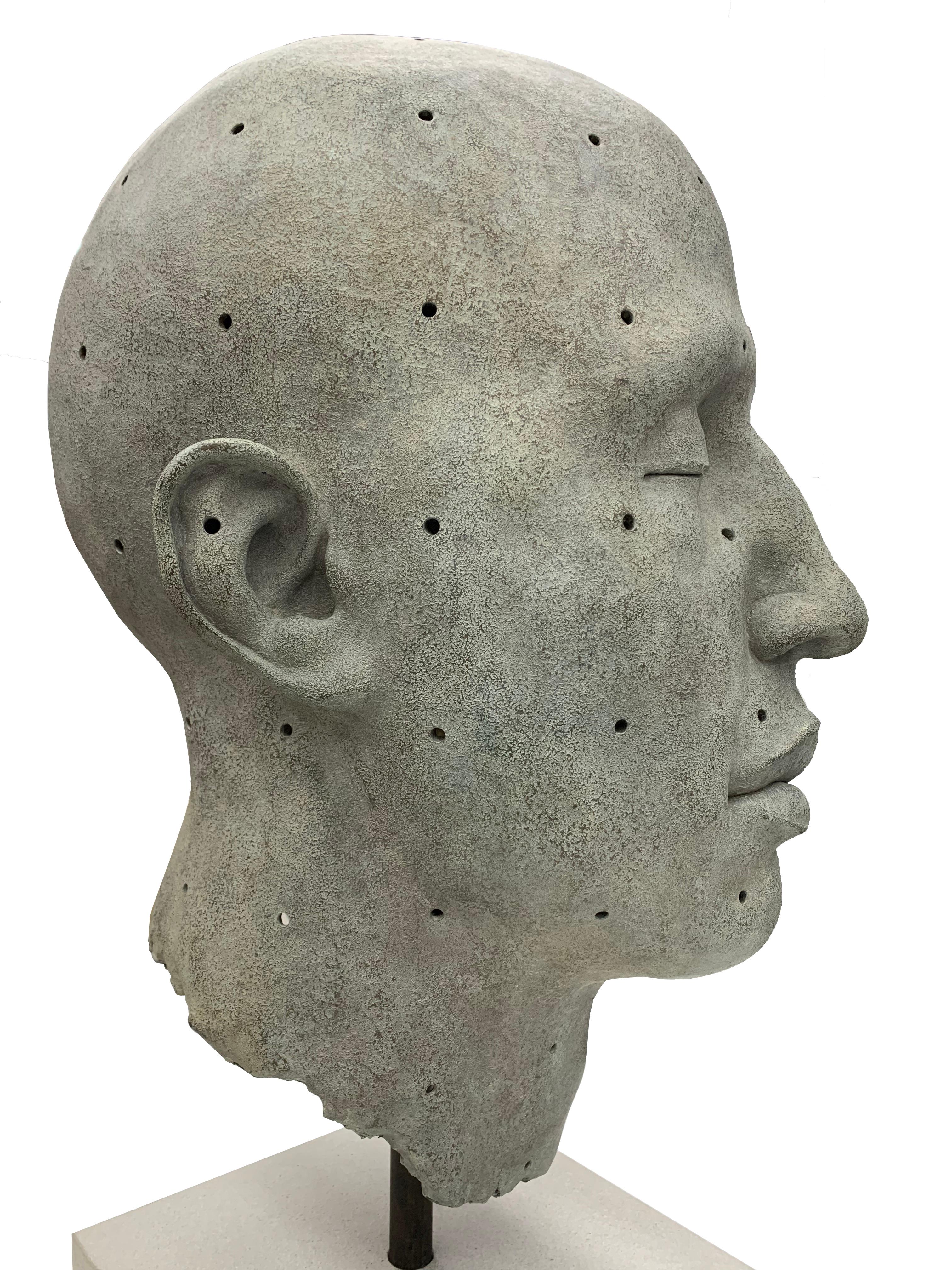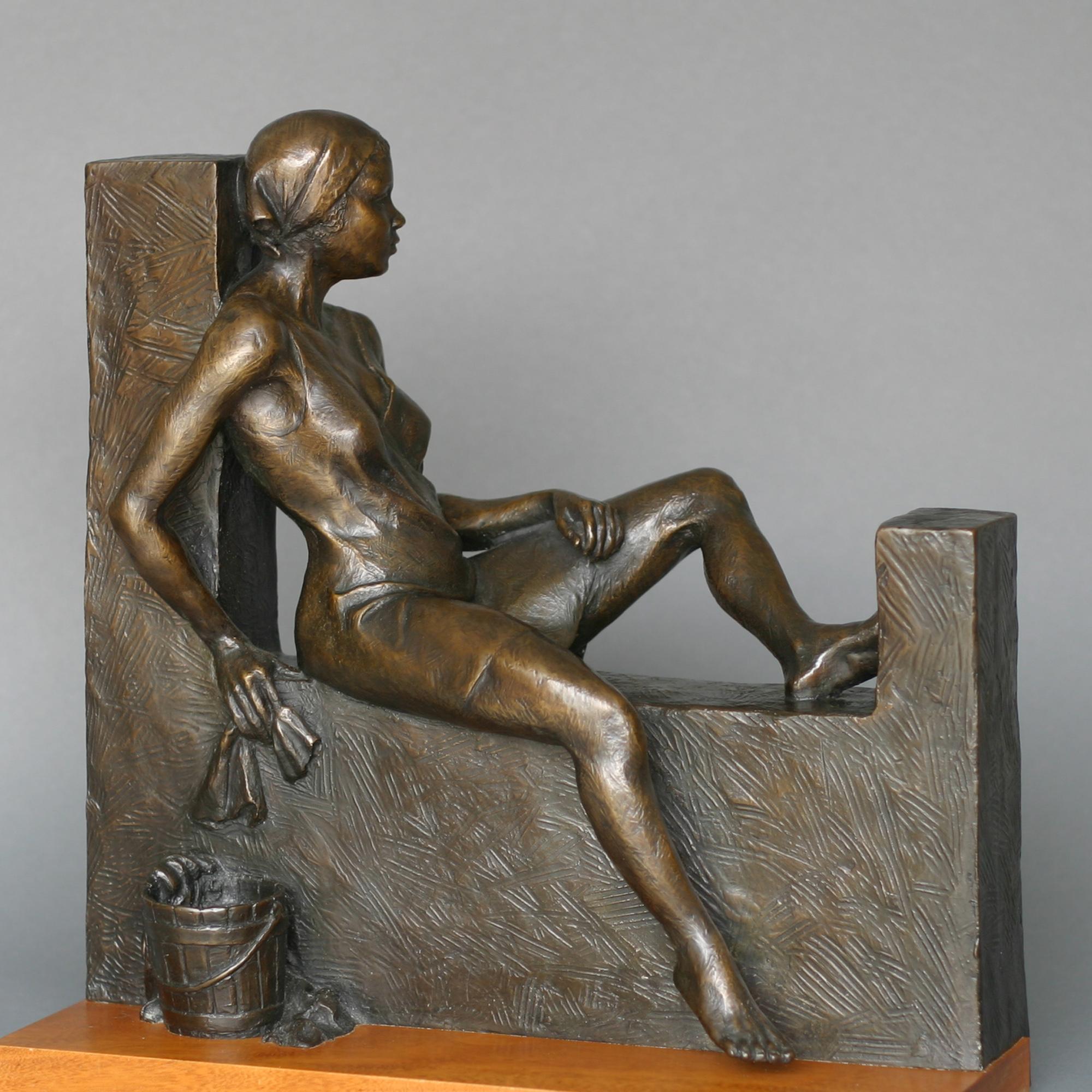Items Similar to Little Red Riding Hood Inkwell
Want more images or videos?
Request additional images or videos from the seller
1 of 7
Antoine BofillLittle Red Riding Hood Inkwell1920
1920
About the Item
Antoine Bofill
"Little Red Riding Hood"
Bronze Inkwell
6H x 10W x 6D
Signed
Inscribed: 25 Septembre 1920
Antoine Bofill was born in Barcelona in 1875 and studied at the Fine Art Academy in Barcelona. He exhibited in Spain, Germany and Austria as well as in France. He started exhibiting at the Paris Salon from 1894 and in 1902 was awarded an honorable mention.
- Creator:Antoine Bofill (1875 - 1939, Spanish)
- Creation Year:1920
- Dimensions:Height: 6 in (15.24 cm)Width: 10 in (25.4 cm)Depth: 6 in (15.24 cm)
- Medium:
- Movement & Style:
- Period:
- Condition:
- Gallery Location:Missouri, MO
- Reference Number:1stDibs: LU74733402673
About the Seller
5.0
Vetted Seller
These experienced sellers undergo a comprehensive evaluation by our team of in-house experts.
Established in 1970
1stDibs seller since 2017
140 sales on 1stDibs
Typical response time: 21 hours
- ShippingRetrieving quote...Ships From: Missouri, MO
- Return PolicyA return for this item may be initiated within 2 days of delivery.
More From This SellerView All
- Going into BattleBy Carl KaubaLocated in Missouri, MOCarl Kauba "Going into Battle" c. 1920s Bronze with Brown Patina Signed approx 10 x 10 x 4 (including wooden base) This Austrian sculptor was born in Vienna in 1865. His teachers were Karl Waschmann (1848-1905), known for his ivory sculptures and portrait plaquettes of contemporary celebrities, and Stefan Schwartz (1851-1924), who exhibited in Paris, including the Exposition Universelle of 1900 where he won a gold medal. Kauba's intricate bronzes, imported to the United States between 1895 and 1912, were cast at the Roman Bronze Works. Kauba was part of the nineteenth-century tradition of polychrome bronze sculpture. There were several types of patinas on a single statue: he could render the color of buckskin, variously tinted shirts, blankets, feathers, as well as beaded moccasins. Reportedly, Kauba came to America around 1886. Inspired by the Western tales of German author Karl May, he traveled to the West and made sketches and models. Critics, however, pointed out inaccuracies of costume and other details. For instance, the guns that his "mid-nineteenth-century" figures use are models produced after 1898. Apparently he did all of his works back in Vienna. Besides the variety of color, Kauba's bronzes show a great range of textures and his style is highly naturalistic. The sculptor loved ornament, some of which he rendered with coiled wire for reins, rope and feathers in headdresses. He successfully rendered figures in motion and often executed compositions with more than one figure. Berman (1974) illustrates non-Western subjects by Kaula, such as the pendants Where? and There (ca. 1910), a seated Scottish couple, impressive in the expressions and the details on patterned fabrics of both sitters. Another genre piece is Buster Brown...Category
Early 20th Century Realist Figurative Sculptures
MaterialsBronze
- Jockey On HorsebackBy Hans GuradzeLocated in Missouri, MOHans Guradze (German, 1861-1922) "Jockey On Horseback" Bronze Approx. 19.5 x 17 x 6 inches Signed "H. Guradze Berlin" on BaseCategory
1890s Realist Figurative Sculptures
MaterialsBronze
- Lion and Antelope (No. 23)Located in Missouri, MOAlfred Barye (1839-1882) "Lion and Antelope" Bronze Approx. 7.5H x 9W x 4D inches Signed "BARYE.ALF" and Inscribed under base "NO. 23 LION AND ANTELOPE" The son of a goldsmith, Parisian born Antoine-Louis Bayre was a sculptor of animal subjects and acclaimed, not only for his apparent skill, but as the founder of what became known as the French Animaliers School. Among his patrons were representatives of the state government and royalty including the Duke of Orleans and the Dukes of Luynes, Montpensier and Nemours. Well compensated financially, he was able to buy the best of materials and hire the country's most skilled foundry craftsmen. The foundry he hired was owned by Ferdinand Barbedienne, and casts from this period were stamped with the letters, FB. However, he did not make a lot of money from his work because he was such a perfectionist that often he would not sell his work because he thought it was not 'quite right'. In 1848, he declared bankruptcy, and his molds and plaster casts were sold along with the copyrights. Bayre's specialty was aroused, angry seeming wild game such as lions and tigers and elephants, but he also did equestrian groups and mythology figures. In order to do realistic depictions of animal anatomy, he spent much time at the Jardin de Plantes in Paris. His early training was as an apprentice to a metal engraver, but being drafted in the army in 1812, ended that education. In 1832, he had established his own studio, and unique at that time was his method of cold stamping his bronze casts, so that each one had a special number. He had his first entry, The Milo of Croton...Category
19th Century Realist Figurative Sculptures
MaterialsBronze
- The Hunter and HoundBy Pierre Jules MêneLocated in Missouri, MOPierre-Jules Mene "The Hunter and Hound" (Le Valet de Limier) 1879 Bronze approx. 19 x 8 x 14 inches Signed PIERRE JULES MENE (1810-1879) Pierre...Category
1870s Realist Figurative Sculptures
MaterialsBronze
- Native American in CanoeBy Carl KaubaLocated in Missouri, MOCarl Kauba (1865-1922) "Native American in Canoe" Polychrome Bronze Signed approx 5.5 x 10 x 2.75 inches This Austrian sculptor was born in Vienna in 1865. His teachers were Karl Waschmann (1848-1905), known for his ivory sculptures and portrait plaquettes of contemporary celebrities, and Stefan Schwartz (1851-1924), who exhibited in Paris, including the Exposition Universelle of 1900 where he won a gold medal. Kauba's intricate bronzes, imported to the United States between 1895 and 1912, were cast at the Roman Bronze Works. Kauba was part of the nineteenth-century tradition of polychrome bronze sculpture. There were several types of patinas on a single statue: he could render the color of buckskin, variously tinted shirts, blankets, feathers, as well as beaded moccasins. Reportedly, Kauba came to America around 1886. Inspired by the Western tales of German author Karl May, he traveled to the West and made sketches and models. Critics, however, pointed out inaccuracies of costume and other details. For instance, the guns that his "mid-nineteenth-century" figures use are models produced after 1898. Apparently he did all of his works back in Vienna. Besides the variety of color, Kauba's bronzes show a great range of textures and his style is highly naturalistic. The sculptor loved ornament, some of which he rendered with coiled wire for reins, rope and feathers in headdresses. He successfully rendered figures in motion and often executed compositions with more than one figure. Berman (1974) illustrates non-Western subjects by Kaula, such as the pendants Where? and There (ca. 1910), a seated Scottish couple, impressive in the expressions and the details on patterned fabrics of both sitters. Another genre piece is Buster Brown...Category
Early 20th Century Realist Figurative Sculptures
MaterialsBronze
- Study AimBy Carl KaubaLocated in Missouri, MOCarl Kauba "Study Aim" c. 1920 Bronze with Brown Patina Signed approx. 9.5 x 10 x 4 This Austrian sculptor was born in Vienna in 1865. His teachers were Karl Waschmann (1848-1905), known for his ivory sculptures and portrait plaquettes of contemporary celebrities, and Stefan Schwartz (1851-1924), who exhibited in Paris, including the Exposition Universelle of 1900 where he won a gold medal. Kauba's intricate bronzes, imported to the United States between 1895 and 1912, were cast at the Roman Bronze Works. Kauba was part of the nineteenth-century tradition of polychrome bronze sculpture. There were several types of patinas on a single statue: he could render the color of buckskin, variously tinted shirts, blankets, feathers, as well as beaded moccasins. Reportedly, Kauba came to America around 1886. Inspired by the Western tales of German author Karl May, he traveled to the West and made sketches and models. Critics, however, pointed out inaccuracies of costume and other details. For instance, the guns that his "mid-nineteenth-century" figures use are models produced after 1898. Apparently he did all of his works back in Vienna. Besides the variety of color, Kauba's bronzes show a great range of textures and his style is highly naturalistic. The sculptor loved ornament, some of which he rendered with coiled wire for reins, rope and feathers in headdresses. He successfully rendered figures in motion and often executed compositions with more than one figure. Berman (1974) illustrates non-Western subjects by Kaula, such as the pendants Where? and There (ca. 1910), a seated Scottish couple, impressive in the expressions and the details on patterned fabrics of both sitters. Another genre piece is Buster Brown...Category
Early 20th Century Realist Figurative Sculptures
MaterialsBronze
You May Also Like
- "The Farewell Kiss"By Evgeny LancerayLocated in Southampton, NYThis is a beautiful original bronze casting by the foremost Russian sculptor of his day Evgeny Lanceray. Artist signed on the base in Cyrillic (image 5) and is also inscribed on the ...Category
Late 19th Century Realist Figurative Sculptures
MaterialsBronze
- The Age of Innocence - New Sculpture bronze bust by Alfred DruryLocated in London, GBALFRED DRURY, RA (1856-1944) The Age of Innocence Signed: A DRURY Bronze on green marble base Height including base 45.5 cm., 18 in. Born in Islington...Category
1890s Realist Figurative Sculptures
MaterialsBronze
- British Relief Bronze Portrait of Sir Henry Irving by Albert ToftLocated in London, GBALBERT TOFT (1862-1949) Relief Portrait of Sir Henry Irving Indistinctly signed l.r.: Albert Toft Bronze, dark brown patina, on wooden base Diameter 24....Category
Early 1900s Realist Figurative Sculptures
MaterialsBronze
- Girl at WaterfallLocated in Sempach, LU"This is one of my earliest sculptures. I depicted a naked girl at the waterfall. She bathes under jets of water. The fabric of clothing hugs her body and lies down to her feet. The ...Category
1980s Realist Figurative Sculptures
MaterialsBronze
- James Mathison, Cabeza grande con huecos, 2011, Bronze, 76 x 50 x 57 cmLocated in Miami, FLJames Mathison Cabeza grande con huecos, 2011 Bronze 76 x 50 x 57 cm 29.9 x 19.6 x 22.4 in. Following the humanist tradition of sculpture, Mathison creates from diminutive to large scale pieces assessing the character, nature and qualities of different parts of the male figure and ascertaining his exact size and proportions with the use of solid materials, to render expressive and emotional works. "Having explored the visual and practical use of resin and bronze, Mathison registers his signature mark that as imprints or fingerprints, show that the passage of time has left on its surface," said Venezuelan art...Category
2010s Realist Figurative Sculptures
MaterialsBronze
- A Figurative Impressionist Bronze Metal Sculpture, "Just A Minute"Located in San Diego, CAA one of a kind 15x15x9 Figurative Impressionist Bronze Metal Sculpture. A certificate of authenticity will be provided upon its purchase or delivery. Manuelita Brown is a San Dieg...Category
2010s Realist Figurative Sculptures
MaterialsBronze

